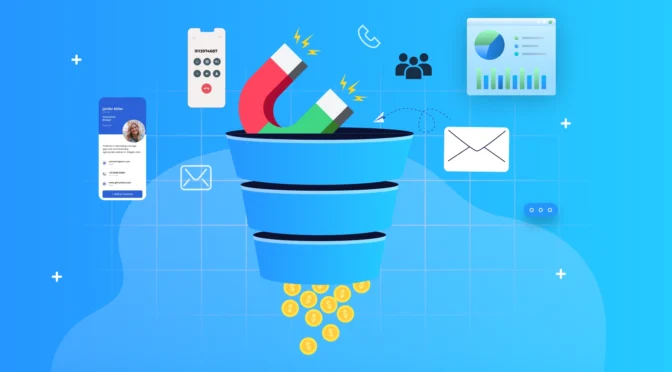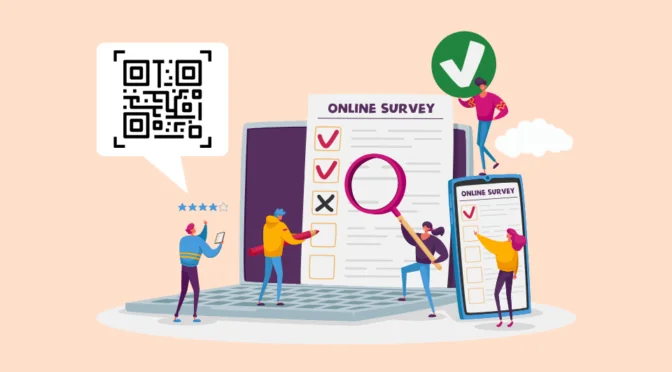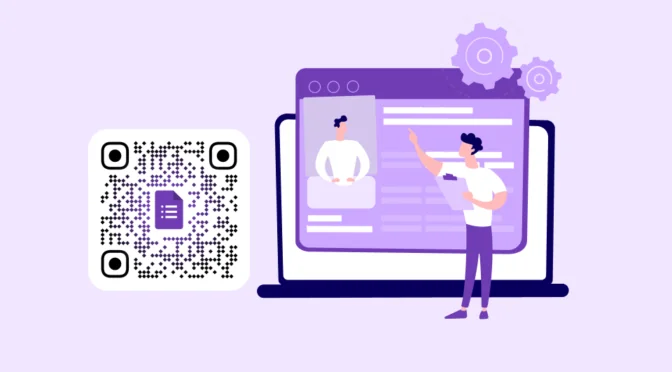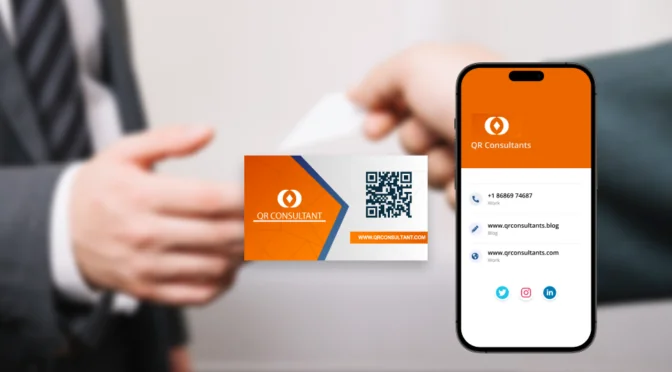Prime listings sitting untouched, marketing budgets bleeding dry, commissions slipping through your fingers like sand. That’s every real estate agent’s nightmare.
Here’s why: traditional marketing tactics—the expensive billboard ads and generic flyers—don’t cut it anymore.
You need a better way to connect with potential clients and generate leads in a hyper-competitive real estate market.
Building a lead generation strategy for real estate businesses
We curated 12 practical tips to grow your real estate business through three main channels: digital marketing, traditional marketing, and networking. Let’s check out recommended practices.
Digital marketing
We’ll break down our best tips for building a strong digital footprint that feeds your lead pipeline year-round.
1. Design a website to get visibility on organic search
Mode: Online
Funnel stage: Top
Real estate is a highly localized business.
Naturally, if you design your website to cater to a specific location, your site will show up more frequently on Google searches in that area.
Here are a few tips to optimize your site for visibility on search engines like Google:
- Create detailed location pages: Set up dedicated pages for the regions you serve. Ensure each page contains location-specific content on neighborhood amenities, school/hospital/transportation details, and local markets.
Here’s a great example from FultonGrace that features pages for different neighborhoods across Illinois:

- Simplify site navigation: Your site architecture must follow a logical structure. Organize your listings into “Residential/Commercial/Rentals” categories to simplify the browsing experience. A custom web design can enhance this structure by ensuring each category is visually distinct and easy to navigate, improving both user experience and search engine optimization. Valords, a Barcelona-based real estate agency, presents a good example of a simple site navigation menu:

- Include regional or local keywords: Use targeted tags to boost the visibility of your listings. For instance, “buy your dream home in [Neighbourhood/City] or “real estate agent in [Neighbourhood/City]. The more specific keywords you use, the better.
Remember to write detailed and interesting descriptions for every property. You can also set up filters based on certain tags, such as “Price/Location/Bedrooms/Square Footage.”
Redfin does something similar. The website has site filters based on what the prospect wants to do (buy, sell, rent).

2. Plan a content and email marketing strategy
Mode: Online
Funnel stage: Top, middle, bottom
Did you know that the real estate industry has an average email open rate of 37.18%?
Compared to this, the automotive and tech industries have just around 29%. That’s a pretty significant gap.

Put simply, you shouldn’t sleep on email marketing. Here’s how you get started.
Start building an email list by sharing your digital business cards (DBC) within your neighborhood. This way, you can collect recipients’ details in exchange.
Create an email with these prospects and periodically send them a newsletter covering details such as:
- Detailed neighborhood guides that highlight the city’s history and architecture
- In-depth market reports that discuss regional market trends, real estate prices, etc.
- “How-to” guides and informative videos for first-time home buyers or sellers
Blog posts are another great option.
Publish helpful articles on your website to answer common questions that prospects may have. Think topics like “How to Buy Your First Home in [City]” or “Top 8 [City] Neighbourhoods to Live In.”
For example, London-based real estate firm, Knight & Frank publishes articles on meaningful topics for homebuyers, renters, landlords, and more.

3. Create a social media presence for a global appeal
Mode: Online
Funnel stage: Top and Middle
Local ads, community-wide promotions, and neighborhood events will only take you so far.
To expand your real estate lead generation strategy beyond regional borders (maybe even global), you must establish a presence on social networking platforms as part of a broader digital marketing strategy
And this isn’t strictly in a professional capacity. Instead, try to merge what you do and who you are. In other words, push yourself as a brand.
Carrie Nicholson is the perfect example here. Her Instagram profile feels personal and bright. And it even makes buying a piece of the Hawaiian lifestyle seem as carefree and dreamy as it sounds.

Consider embedding a dedicated link page in your profile to maximize your online reach.
With Uniqode’s Linkpages, your social media bio becomes more than just a line of text.
You can consolidate all essential details about your business—property listings, virtual tours, and contact forms—into a single, easy-to-navigate page.
These Linkpages can reduce friction so people can learn more about you and get in touch.
Uniqode lets you choose from a range of exciting, customizable templates to reflect your brand’s personality and gain your prospects’ trust. This page is mobile-friendly, and you can publish it within a few minutes.

4. Offer virtual tours to expand your reach
Mode: Online
Funnel stage: Top
Virtual tours can help you expand your real estate lead-generation efforts beyond traditional channels. Better yet, they save you the time of traveling to the site.
Here are a few ways to offer virtual tours:
- Livestreaming: Platforms like Instagram, Facebook, and Twitch let you livestream content. Use these sites to guide potential buyers through the property while answering any questions they may have through comments or direct messages.
- Prerecorded walkthroughs: These are perhaps the simplest form virtual tours can take. The good news is that you don’t need an elaborate setup. Simply record the tour on a decent camera and upload the footage on your site listing or YouTube. If you’re looking for something a bit more polished, tools like Giraffe360’s all-in-one virtual tour platform can help you create smooth, professional-quality virtual tours without needing a full camera crew.
- Website/social media integration: Plenty of real estate agencies embed links to virtual property tours directly under the site listing or on their social media posts. This lets potential buyers explore the property from a single source.

💡Pro Tip: Create dynamic QR Codes for your virtual tours and post them on your site, billboards, DBCs, and event venues.
This way, people can check out the property even if they missed a scheduled livestream or don’t follow your social media account.

5. Run retargeting ads through QR Codes
Mode: Online
Funnel stage: Middle
We’ve talked about how QR Codes and digital business cards can help with your real estate lead generation strategy.
However, many prospects might just scan your code but don’t convert. That’s what latest research indicates: the average conversion rate in real estate hangs at a lowly 2.4%.
What do you do then? Do you call them up again? Will that be enough to pull them back in?
A simple solution would be to implement retargeting ads through your QR Codes. Here’s a quick summary of how this works:
A user scans your code to visit your brand’s website. Then, a cookie drops into their browser. This notifies sites like Google or Facebook that they are interested in your content.
Later, when they are browsing through those sites, you can deploy specific ads in designated page spaces.
Before you jump into it though, it’s important to note that retargeting ads only work on dynamic QR Codes. So, if you’re still using static ones, you might want to consider switching.
Traditional marketing
Here are some traditional marketing tactics to activate your local community and generate leads.
6. Launch billboards and outdoor advertising campaigns
Mode: Offline
Funnel stage: Top and middle
As a real estate agent, you’re probably no stranger to billboards or outdoor advertising campaigns.
Here are a few ways to fine-tune your lead-generation efforts from these channels.
- Property proximity: Prioritize placing your ads close to the property if it’s a new development. This helps catch the attention of buyers already interested in the area/neighborhood.
- Demographic and traffic: Choose ad locations that match the demographic profile of your buyers. For example, if you’re listing luxury condos, put up billboards in areas with higher-income residents.
- Branding and visuals: Ensure that your logo is clearly visible so that people automatically associate the billboard with your brand/firm. Also, use bold and high-contrast fonts to maximize visibility in poor weather conditions.
- Seasonality: A campaign during spring attracts more attention since that’s when people usually purchase homes. However, property rates also drop during winter. Use these timelines to build your ad messaging accordingly.
Remember to incorporate interactive elements into your outdoor ads. For example, you could add a QR Code that redirects people to all the available listings or offers a virtual property tour.
This is more convenient than adding a contact number or email. People can simply scan a QR code and find everything they need before contacting you.

7. Establish a referral program for existing clients
Mode: Online
Funnel stage: Bottom
Referral programs can be a powerful word-of-mouth marketing tool for your real estate business.
You need certain ground rules to ensure this program runs smoothly.
For one, eligibility is a critical factor. Are you opening up the program to all clients, past and present? Or will you stick to current homeowners in your existing developments?
You also have to:
- Set designated referral channels to streamline the process (email/phone call/forms)
- Implement a dedicated verification process to avoid fraudulent claims/legal liabilities
- Clarify on specific redemption/claim periods to minimize the firm’s financial strain
As for rewards, it all depends on what you think is appropriate.
The most common monetary incentives are cash payouts, commission percentages, or gift cards. The Mumbai-based Marathon Group offers rewards of up to 1% of the purchase price, and the referral also gets a discount on the property.

You can use your digital business cards to streamline this referral program.
How?
A DBC includes all your contact information—phone number, email address, and physical address. You can also add a URL like your website or any landing page.
By sharing your card with every customer, you can encourage them to contact you whenever they want to refer a prospect. This way, people will know exactly how to reach you, and you can find high-quality, targeted leads.
8. Practice circle prospecting to connect with the neighborhood
Mode: Offline
Funnel stage: Top
Circle prospecting involves contacting homeowners within a radius of one of your recent listings. Then, you inquire if they (or anyone they know) might be interested in purchasing or selling a property.
The best part about this method is that it only demands as much time as you can afford. You can build awareness among the community and invite people to contact you.
Can’t go from door to door? Put a flyer out and add a QR Code for your DBC to generate inbound interest.
Calls taking up too much of your time? Create an email template and send it to prospects with your business card in the email signature.
Want to reach a broader audience? Make a broadcast list and share announcement messages with a link to your digital business card on WhatsApp for further contact.
The important thing here is to time your circle prospecting efforts to coincide with recent neighborhood events and give people the details so they can reach out to you.
Besides that, here are a few pointers to help you out:
- Prospecting is just the first stage of getting in touch with homebuyers. You can engage them by moving these leads to a CRM or email marketing software. These tools also help you track campaign performance for faster conversions.
- Uniqode QR Codes help you collect lead information and simplify workflows across various platforms with automation. No matter which tool you opt for, there’s a way to automate the flow of leads with direct integrations or via Zapier.
- Opt for services like Vulcan7 or Odoo to gain access to scrubbed contact details for homeowners in the neighborhood.
- Send out hyper-localized market data (recent sales/number of offers per listing) through newsletters and emails to create buyer/seller urgency.

Remember that circle prospecting is a long game. In other words, don’t expect to make a sale as soon as you begin. It can take 6-12 months (sometimes even more) to hear back from your leads.
Networking
Let’s see how you can consistently find high-intent leads through networking and relationship-building.
9. Build awareness through local community campaigns
Mode: Offline
Funnel stage: Top
Organizing local campaigns is an excellent way to improve your “on-the-ground” visibility. It positions you as a leader in the neighborhood and shows your commitment to the people beyond the business.
And research also indicates that community-led meetups are the fastest-growing “event type” in engagement. So, it’s a win-win for you and your prospects!

You can gain community support with a few simple tactics, including these:
- Host neighborhood beautification days: Organize a volunteer event to clean up parks, community centers, and other public spaces. Share a QR Code to invite people to participate in this event. You could also partner with local businesses to create branded supplies.
- Sponsor holiday events: Seasonal events (Summer BBQs/Halloween parties) are the best place to build your local network. Use such opportunities to educate your neighbors on your services or the local real estate market in a non-promotional way.
- Organize free buyer/seller workshops: Offer a series of educational workshops (virtually or at the local community center) for first-time home buyers or sellers. Cover topics like financing, local market trends, mortgage options, etc.
You can offer meaningful resources to engage participants during and beyond these events.
Place QR codes at relevant places to direct attendees to helpful tools like a home valuation calculator, interactive guides for first-time homebuyers, or calendars of local community events. Share QR Codes, inviting attendees to schedule a free consultation with your team.
With a QR Code generator, it’s easy to embed contact forms to collect information and track engagement. Customize your codes and add different types of resources, such as PDFs, landing pages, SMS texts, social media pages, and more.
10. Host open houses to network with prospects
Mode: Offline
Funnel stage: Top
Open houses allow you to:
- Directly interact with potential buyers
- Network with homeowners who could be prospective sellers
- Market your services (flyers/social media/local ads) for better exposure
You can give folks from your neighborhood early access and invite them to inspect the property earlier.
So, let’s say you have an open house scheduled from 11 AM to 4 PM. Let the neighbors come by around 9 AM to beat the crowd. This has two-fold benefits:
- It allows you to directly connect with homeowners in the neighborhood and build a presence in the community.
- You meet people who may not be in the market to buy or sell a house currently. However, the fact that they showed up means that there may be interest in the future.
This is a great opportunity to exchange contact information.
Instead of simply handing out your paper business card, you can share a digital business card to give them your details and collect their information in return.
With DBCs, your contact details are instantly saved on the recipients’ devices. They’ll also be prompted to share their details with you.
You can send them a message or email later and pick up the conversation right where you left off.
11. Build partnerships through door-to-door sales
Mode: Offline
Funnel stage: Middle
Door-to-door sales in real estate aren’t really about making a sale. It has more to do with identifying potential community partners and establishing long-term connections with the locals.
Here’s one example:
You’ve just sold a property in a neighborhood. Now, your next step isn’t to move on to a new listing. Instead, you have to ask around and identify potential partners in the area.
This could be anybody—homeowners, local businesses, investors, or contractors—looking to sell, buy, or renovate properties in the future.
With this networking exercise, you can build symbiotic relationships for the long term.
For example, if you send a lead their way, you could ask for a reciprocal referral.
Partnering with other real estate agents operating in the surrounding area is also an excellent idea.
Simply exchange cards with two-way contact sharing enabled, and you’re good to go.
Two-way contact sharing lets you:
- Share your contact details through a message, QR Code, link, or digital wallet
- Collect and save recipients’ information via a simple form
That way, when you have a particularly challenging listing that no one’s going for, you can reach out to them and vice-versa.
12. Build a geo-farming network in your chosen area
Mode: Offline
Funnel stage: Bottom
Geo-farming means you consistently market your services in a certain neighborhood through community events, hosting open houses, targeted social media or online ads, etc.
Geo-farming includes a hyper-specific focus on an area that has gone cold. In short, your leads in that region aren’t following through.
So, why do this at all?
For one, you get to re-establish your presence in that neighborhood. Second, if you consistently engage with multiple potential clients in the area, you can position yourself as a trusted real estate agent in that community.
However, you must evaluate a few things before you implement a geo-farming strategy, such as:
- Area turnover rate: This is simply the number of homes being sold in that neighborhood. A high turnover rate implies that more homeowners are selling their properties, and there’s likely to be increased purchasing interest.
- Real estate agent saturation rate: Review the number of other agents currently operating in the area. If it’s too high or a select few are performing extremely well, it may be difficult for you to break through with that community.
- Time on the market for homes: Faster market times indicate a strong purchasing demand in the area. Slower cycles can suggest a less attractive neighborhood or poorly executed marketing efforts. Get familiar with these timelines to set realistic expectations for your listings.
Your personal knowledge and connection with the neighborhood also matter. Put simply, if you’re very new to the area or you just don’t have enough information on the region, it can be challenging for you to make a mark.
Tracking these metrics gives you a realistic picture of an area’s potential for success. You can estimate the kind of opportunities you’ll find in this region and strategize accordingly.
How do you measure your lead generation success?
Ready to put your lead-generation strategy into action? Use these metrics to track whether your real estate lead-gen tactics are a hit or a miss:
1. Number of leads generated
Monitor how many potential customers you’ve secured in a given time frame. You can divide new leads acquired across different channels and compare this data to find the most high-performing lead-gen channels.
2. Conversion rate
Calculate the percentage of leads converting into customers. To find your conversion rate, divide the number of closed deals by the total number of leads and multiply by 100. A low conversion rate might indicate weaknesses in your strategy and help you fix these revenue leaks.
Formula: (Number of Closed Deals / Total Number of Leads) × 100
3. Customer acquisition cost (CAC)
CAC reveals the money you spend to acquire a new customer. It’s the sum of all your expenses on lead generation divided by the number of new customers acquired in a given duration. Tracking CAC can improve budget allocation by assigning more budget to channels and tactics with comparatively lower costs.
Formula: Total Lead Generation Expenses / Number of New Customers Acquired
4. Lead-to-customer rate
Measure the percentage of leads turning into paying clients. This metric tells you the effectiveness of your sales funnel, especially in the middle and bottom of the funnel. A low lead-to-customer rate can highlight gaps in your lead nurturing and engagement tactics.
Formula: (Number of Paying Clients / Total Number of Leads) × 100
5. Time to conversion
Track the average time it takes a lead to convert into a customer. This metric reveals where leads get stuck or drop off in your sales funnel. You can identify friction points and implement the right tactics to remove these bottlenecks.
Formula: Total Time for All Leads to Convert / Number of Leads Converted
Besides, measuring engagement rates will tell you how prospects move through different stages of your lead-generation funnel.
With Uniqode’s detailed analytics dashboard, you can track engagement with metrics like:
- QR Code scans and digital business card views to track the number of leads generated
- Geo-analysis of locations to assess your campaign’s reach within and beyond a neighborhood
- Day-wise and hour-wise analysis to analyze the pace and progress of your lead-gen campaigns
And more!

Use this real-time data to identify your top-performing campaigns and channels with the maximum reach. With DBCs, you can also save a prospect’s contact and build a database for the future.
Attract real estate clients with these lead-generation tactics
Old-school lead-generation tactics aren’t enough to close deals in today’s aggressive real estate market. You must level up your lead-gen game with our 12 recommended best practices.
At the end of the day, real estate lead generation comes down to the relationships you build.
Start your relationships with prospects on a positive note and keep engaging with each prospect as you move forward.
Get started with Uniqode’s customizable ROI-driven digital business cards. Create one for free today.
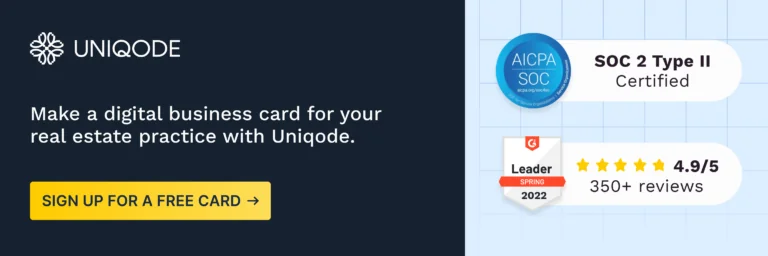
Frequently asked questions
1. What is lead generation in real estate?
Lead generation in real estate involves capturing and nurturing prospect attention for your listed properties. The goal is consistently generating interest in your offerings and turning that engagement into a sale.
This could translate to initiating interpersonal interactions with local community members and fostering professional relationships with neighborhood vendors, small businesses, investors, or contractors in the real estate industry.
2. What are some effective methods for generating real estate leads?
Use QR codes and DBCs to interact with your prospects in your neighborhood, build awareness for your listings, and establish relationships.
You can host open houses, organize and get involved in local community events, content marketing, and outdoor advertising campaigns to generate leads.
Offering virtual tours (livestreams/pre-recorded)and leveraging interactive elements like QR Codes in advertisements (to redirect prospects) can also be extremely effective.
3. How can I use social media for real estate lead generation?
Publish posts that showcase pre-recorded tours of your listings on your social channels. You could also create short reels/clips that highlight the area the property is listed in or the general neighborhood lifestyle (especially for luxury real estate).
Add a Linkpage in your profile’s bio to direct prospects to the right places based on their query. Curate all your relevant links in one place to simplify the experience for potential customers.











